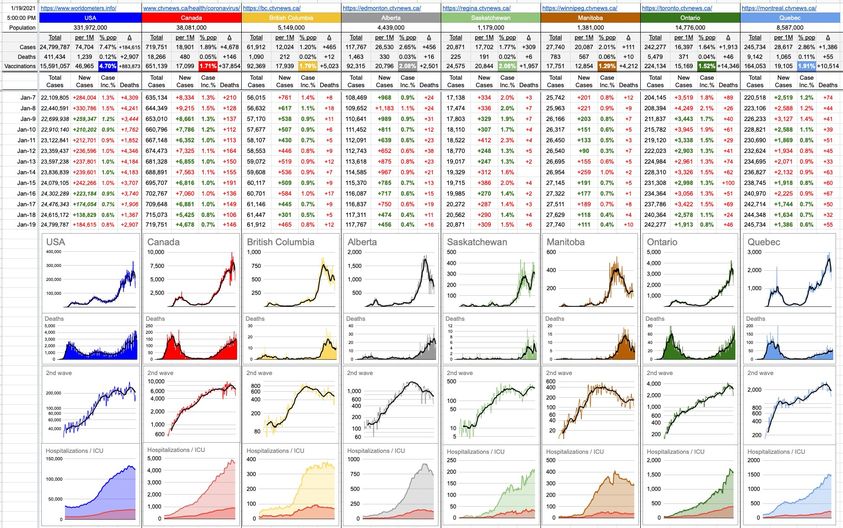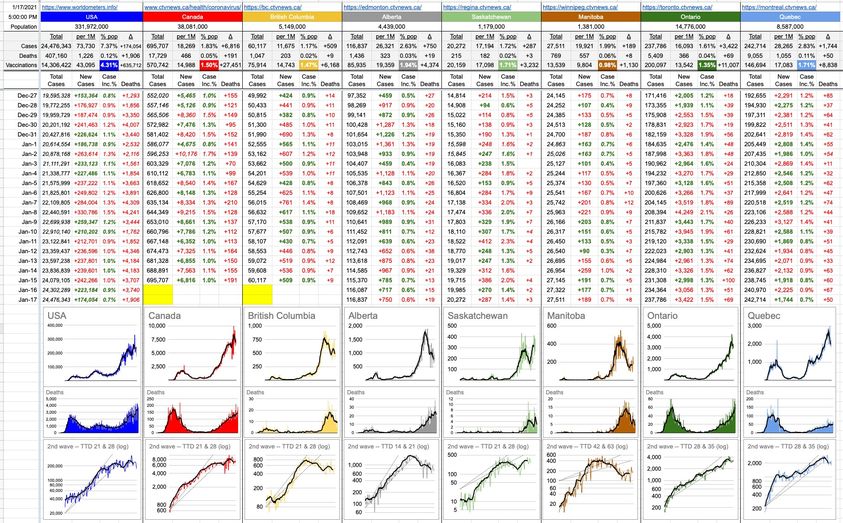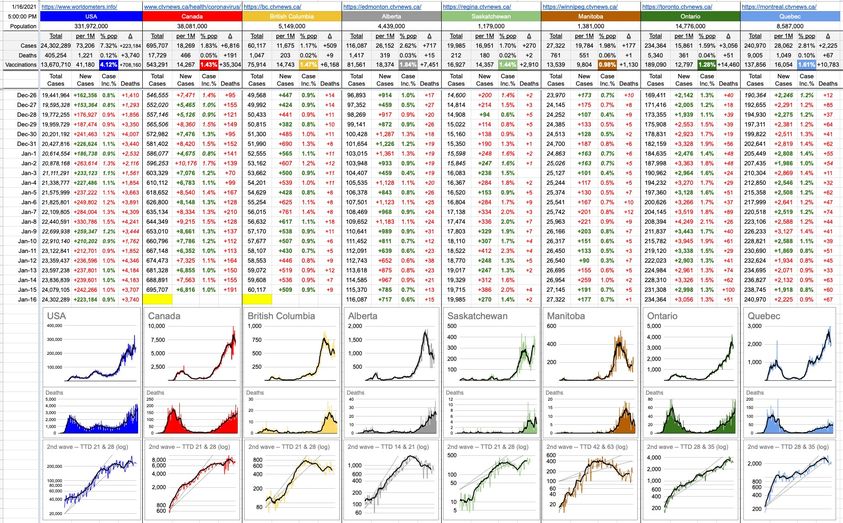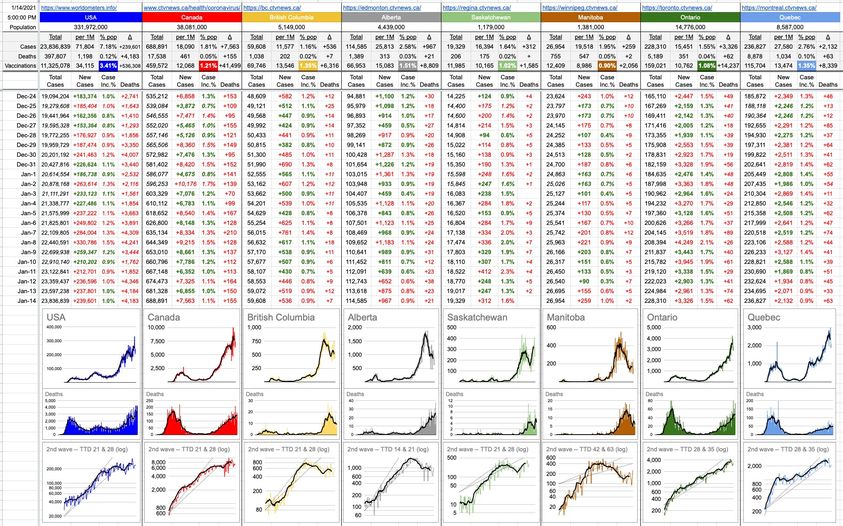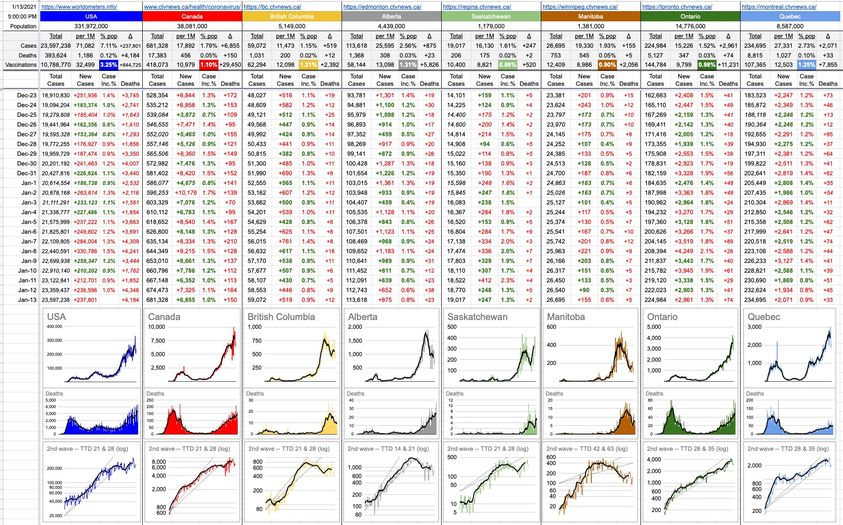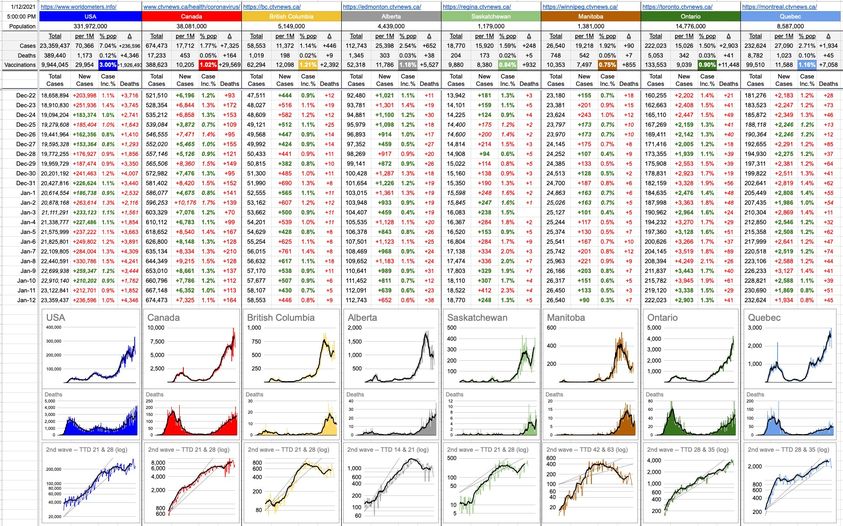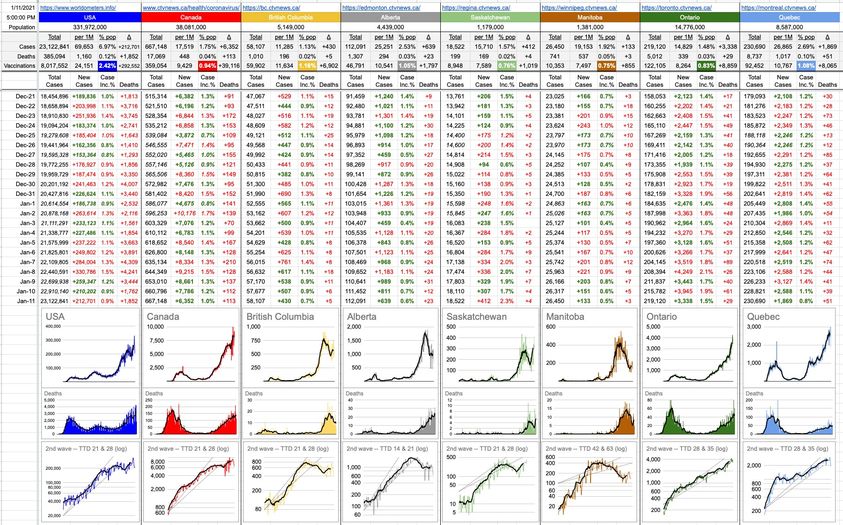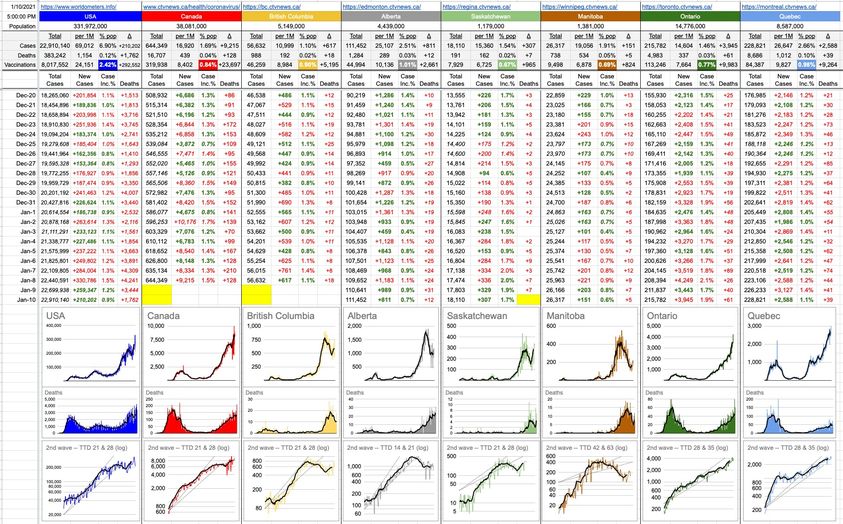January 19, 2021
OK Saksatchewanites/Saskatchabusihes/Saskatchawenians… you now have your hospitalizations graph… thank you to my friend Richard for providing that data in a usable form. But today, let’s talk about the opposite of that… the opposite of needing to go to the hospital is what’ll prevent the vast majority of us from doing so… and that is… vaccines. And there is news to report.
The headline I read screamed, “Thousands of Israelis Tested Positive for Coronavirus After First Vaccine Shot!!!!!” – the exclamation points are mine, but the rest is verbatim… and while that sounds like a disastrous claim, it’s not. If the headline is meant to grab everyone’s attention, it works… but, as usual, there’s more to the story. Let’s dig into the numbers a bit.
First of all, part of the reason Israel managed to get so much vaccine ahead of everyone else is that they were willing to be, in essence, a test-bed for what it would look like to distribute the vaccine through a first-world technologically-capable infrastructure and collect as much valid real-world data as possible… straight from the source. As previously written, many other places who’ve had vaccines long before Pfizer/Moderna came around (China, Russia) have been putting out numbers… which, for numerous and valid reasons, are met with skepticism. But here we have accurate data, so what does it tell us…
Some 12,400 Israelis tested positive after being vaccinated, and, among them, 69 who’d been vaccinated twice. That first number sounds big, but that’s out of 189,000 people – which amounts to 6.6% — an efficacy of 93.4% — which for any vaccine is off-the-charts successful, and is almost bang-on with the expectations of ~95%
Digging a little deeper into the numbers… 100,000 people were tested a week after getting the vaccine; 5,438 were found to be positive… a 5.4% infection rate. A different set of 67,000 people was tested in the 8-14 days-after period, and 5,585 tested positive… 8.3%.
People were also testing positive more than two weeks after getting the first dose, but in declining numbers as time went on. Immunity is meant to start ramping up in days 15 to 21, and that’s reflected in declining positivity numbers… especially after the second dose.
It should be noted that there are other relevant factors; the majority of those who’ve received vaccinations are over 60, and it’s well-understood that people’s immune systems erode as they get older. Flu shots, for example, are less than 60% effective in those 65 and older… as compared to 80% to 90% for those younger than that.
With the Pfizer vaccine, for what it’s worth, 102 employees at one particular medical center were tested a week after immunization. It was found that 100 of them had antibody levels 6 to 20 times higher than the previous week.
In summary, the vaccine works well. Very well. It’s not perfect, because 95 does not equal 100, and its effectiveness varies on numerous factors; some people are simply far more susceptible to infection, and age is one of those contributing factors. At the end of the day, the idea is to get to herd immunity, and that’s achieved when enough people are immune that they’ll protect those who aren’t – and, possibly, who can’t be. By far, the quickest way to get there is through vaccination.
That’s the plan currently being rolled out across the planet, with varying degrees of success; get the shot into as many people as possible, while carefully following the results to make sure they’re in-line with what’s expected. With Israel leading the charge and making available all the data… from what we can see so far… so far, so good.
40 Likes, 5 Shares


